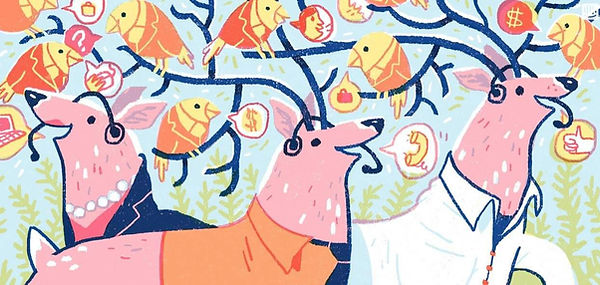LESSONS ON SELLING PRODUCTS
from "Great CEO Within" by Matt Mochary

“To make a sale effectively, you need to do the following three things: One, Build trust. Two, Identify the customer’s specific pain. Three, Sell results, not features”
- Matt Mochary
This is the 2nd part of my summary of the book, and it focus on product development through customer acquisition. Let's begin with the customers, explore what our product can looks like, build the team, and then roll them out!
Customers
Deeply understand the real customers and their problems
Live the customer problem. Embed, converse, observe.
Customer focus should permeate every part of the company.
Listen deeply to customer's pain.
Product must be 10x better than anything in the marketplace
Do annual reviews of competing products and learn
Seek product market fit by observing right metrics (expanded later)
Sales To make a sale effectively, you need to do the following three things:
Build trust. Identify the customer’s pain. Sell results, not features
Building Trust
Ask for a limited amount of time initially "15 minute call"
First meeting, be explicit about wanting to learn of their company
Ask the customer about them
Listen actively and reflect back what they say
Take detailed notes and input into central database
Second meeting, show that you remember what they said at the first
Understanding Their Pain
Identify the customer’s specific challenges by asking the right questions.
You need to understand your customer’s pain before you present your solution. Through a series of questions, your aim is to understand 3 things:
1. What are their goals?
2. What are the challenges preventing them from reaching those goals?
3. What are their ideal solutions to overcoming those obstacles?
Build problem and solution statements that are specific to them.
Talk about Results, not Features
Most people don’t care about your product functionality.
They don’t care about your features.
They care only about their business results
Paint a vision of world where problems are solved
Product
Never grow your team beyond 6 until there is a product-market fit.
Strive and measure product market fit (PMF).
Product market fit means a product that can satisfy that market.
Customers are willing to buy after test phase and recommend it.
For businesses, PMF results in long term contracts
For consumers, PMF results in: Second buy / renewing / net promotor score.
Building A Sales Team & Pipeline
Don’t hire sales people right away.
Sales people do not sell better than founders.
Sales people need clear product offering and targets.
Only hire salespeople if:
1. Established product market fit
2. If we have specific targets on who we are selling to.
More sales people does not equate to more sales.
Obstacle to growth is not growing the team but generating more leads.
When we can predict lead generation, we can predict revenue.
Achieving predictable revenue leads to true scale.
Generating leads and closing deals are distinct functions that must be split. Senior salespeople should have the power and time to close big deals.
Structure of Sales Team
Qualifiers (aka Sales Development Reps)
Focused on generating qualified leads and handing these off to the Closers. They need to determine if the product can address the pain point of the lead.
Closers (aka Account Executives)
Focused on closing the qualified leads generated for them by the Qualifiers. AEs mark the lead as “Qualified” in the CRM, not the qualifier.
Farmers (aka Customer Success)
Focused on tending to existing customers, ensuring that these customers renew, and getting these customers to increase their spend.
Type of Lead Generation
Seeds generated from word-of-mouth, usually from referrals or relationships.
Nets generated from your marketing, such as events, SEO, white papers, and ad campaigns. “quantity over quality”.
Spears hyper targeted by your Outbound Reps, usually through email outreach or LinkedIn mining. “quality over quantity”.
Pitfalls
1. Sell to everyone that comes through the door.
2. Be blinded by TAM without considering CAC, LTV. “China Syndrome”
3. Customize your product for every customer. Engineers stretched thin.
Method of Advancement
Concentrate on low hanging fruit
The problem your product solves 10x better than competition
Only move to next customer segment when resources estb.
Danger is not advancing too slowly, it's spreading resources thin.
Pricing Strategies
Competition-Based Pricing
Cost-Plus Pricing
Dynamic Pricing
Freemium Pricing
High-Low Pricing
Hourly Pricing
Skimming Pricing
Penetration Pricing
Premium Pricing
Project-Based Pricing
Value-Based Pricing
- - - - -
References:
The Great CEO Within:
The Tactical Guide to Company Building
Matt Mochary